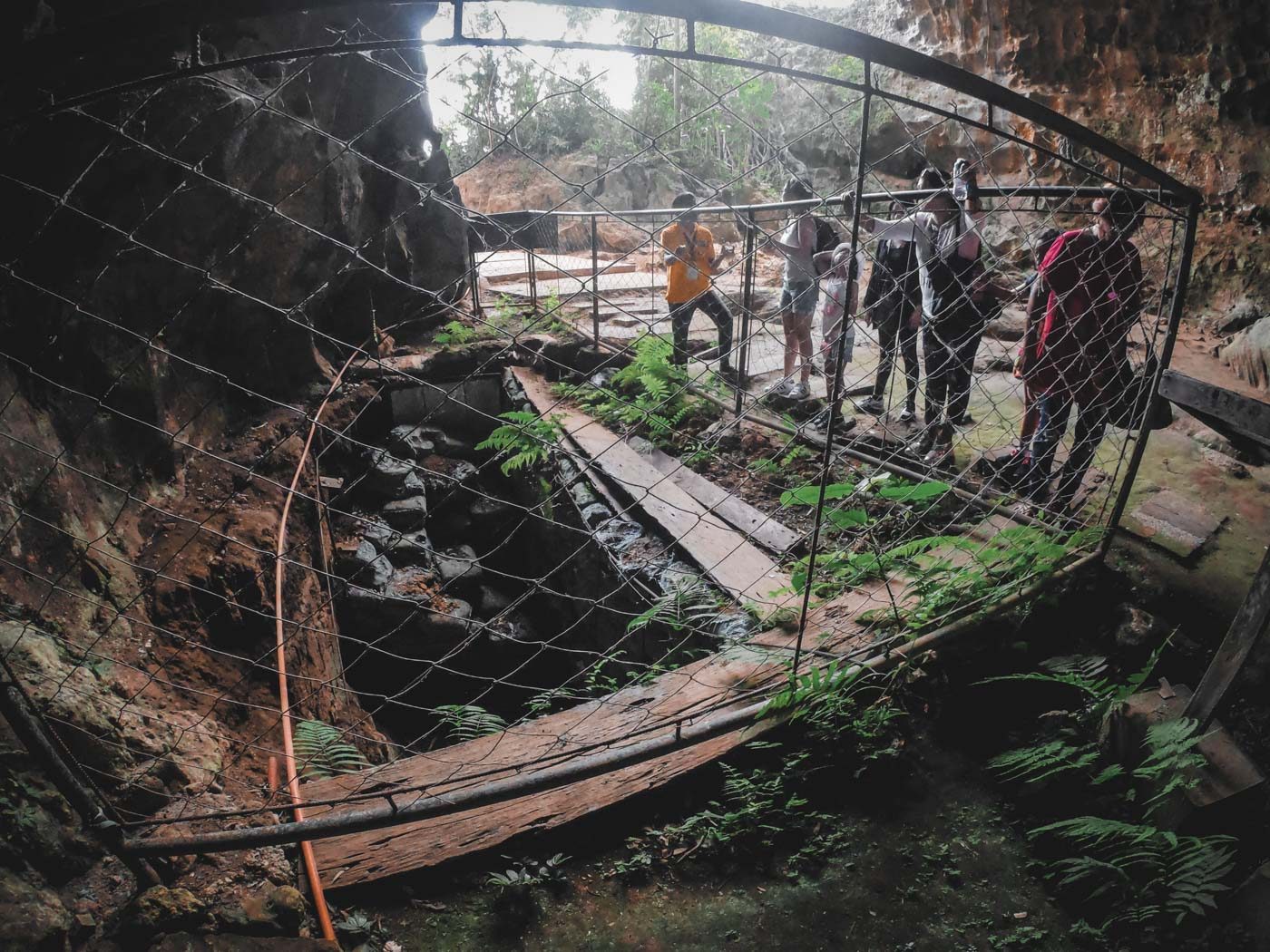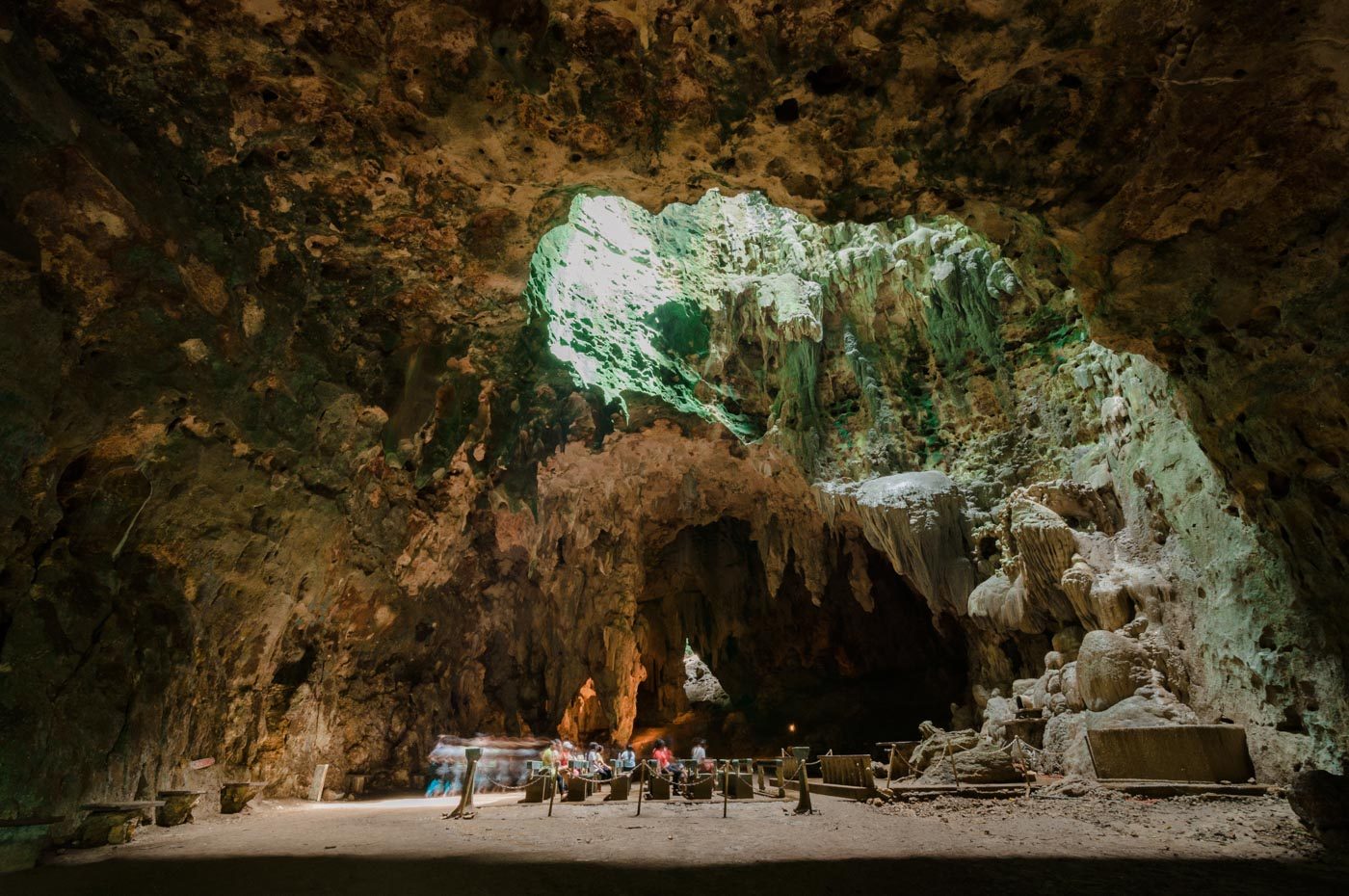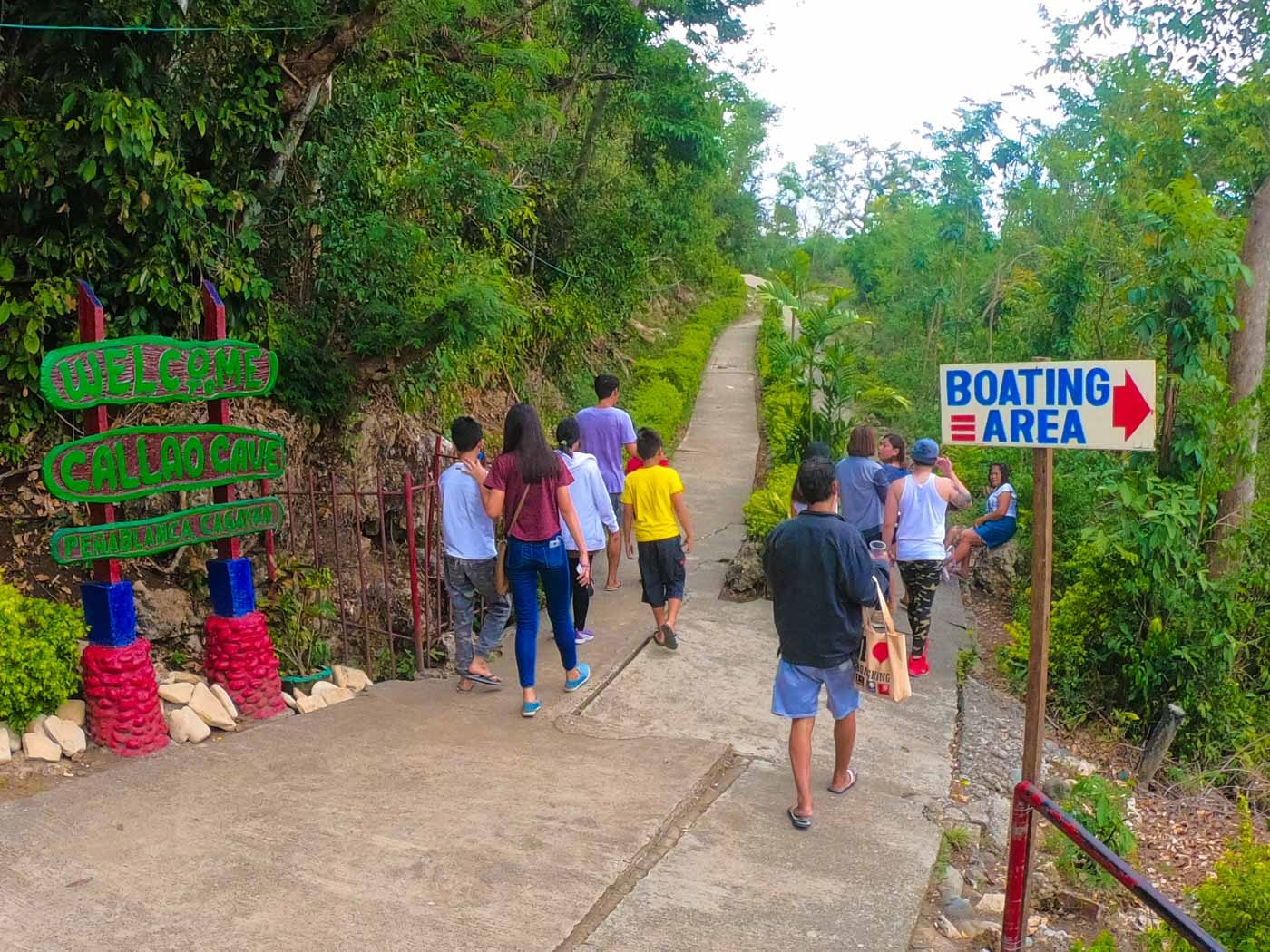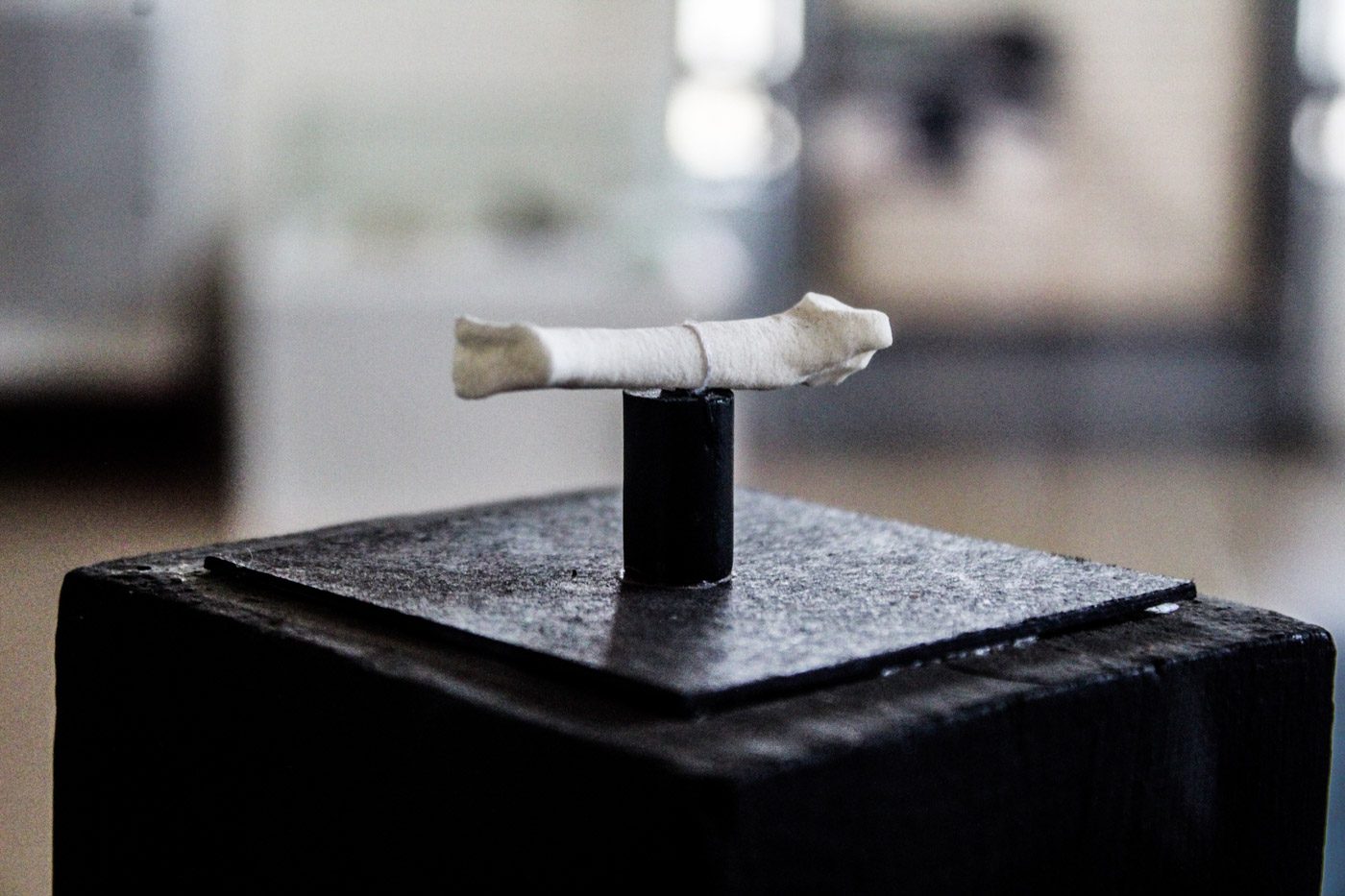SUMMARY
This is AI generated summarization, which may have errors. For context, always refer to the full article.

CAGAYAN, Philippines – With the discovery of Homo luzonensis in Callao Cave in Peñablanca, Cagayan, many tourists have taken a keen interest in the area.
In the past Lenten season alone, the Cagayan Provincial Tourism Office (CPTO) recorded about 8,000 tourists who flocked to see the caves and the diggings where the fossil remains were found.
While the CPTO sees this as an opportunity, it also comes with challenges especially on sustainable tourism in the area.
To ensure that the area will remain protected, stricter rules and measures will be implemented in Callao Cave, according to Cagayan Tourism Officer Maria Rosario Mamba Villaflor.
“The discovery made by Professor Armand Mijares and his team solidifies our initial plans to pursue sustainable tourism in the province,” she said. (READ: Paano babaguhin ng Homo luzonensis ang kasaysayan ng mundo?)
Protecting Callao Cave
The Callao Cave is part of the Peñablanca Protected Landscape and Seascape. The Provincial Government of Cagayan manages 60 hectares of the area that include the cave sites.
The goal of the province’s Tourism Masterplan for Callao Cave is to develop it as a premier ecotourism destination and conservation area with clean and green environment, including culturally and environmentally sensitive facilities.
Gerwin Ferreras, an architect who worked on the blueprint of the masterplan, said that its design philosophy considered the forms of life living in the area and the natural environment.
Thus, it includes the preservation of significant flora and fauna, the Pinacanauan River, and the indigenous people living in the area. Built structures will feature biomimicry.
“The development will also minimize the sprawl of built environment and will definitely preserve green spaces, and we will minimize alterations of natural conditions in construction,” Ferreras said.
At the moment, the local government is constructing a toilet near the visitor’s entrance and stairs leading to the mouth of the cave. Ferreras said that the toilet is indigenous and eco-friendly.
The ongoing construction of structures at the visitors’ pavilion also follows a more natural design while keeping up with structural aesthetics and integrity. Rehabilitation of the electrical wirings and the concrete structures in the caves is also ongoing.
“Some archaeologists suggested that we must construct elevated walkway going in and out to not disturb other areas of the cave,” Villaflor added.

Paying homage
Villaflor said they will focus on activities that will pay homage to our ancestors and respect to nature and the environment. (WATCH: Filipinos make history with discovery of Homo luzonensis)
“We are pursuing the Callao Eco Niche development that will consider not just the cave itself, but the whole ecological interplay in the protected area. Activities in the caves will put more emphasis on the sacredness of the place, as the past habitation of our ancestors and also as the present home of many organisms that give life to the whole cave system,” he said.
Meanwhile, the local tourism office is also pursuing community-based sustainable tourism. The plan is to involve the participation of the locals in the appreciation, promotion, and conservation of the area.
“We have a firm rule that no one can go up the cave without any tour guide. Tour guides, mostly youngsters who are also locals of Peñablanca, are ready to assist tourists and visitors up to the reachable cave chamber. Ten individuals are assigned to a guide,” he said.
At present, the CPTO is maintaining the carrying capacity of Callao Cave, which is around 2,000 persons a day.
According to Salud Vitug, CPTO supervising tourism officer, only 200 people are allowed to go up the caves at a time.

Teddy Babaran, a staff of CPTO, said that this past Holy Week, there was an upsurge in the number of tourists compared to last year. Thus, it was a busy season for the local guides.
There is also a garbage in-garbage out policy. Graffiti, use of camera flash and touching the stalactites and stalagmites are highly prohibited.
“We plan to put a marker on the site of the diggings of Callao Man and Homo luzonensis. Professor Mijares intends to do another excavation closer to the mouth of the caves. It is therefore important for us to maintain the cave as natural as possible because it is an active archaeological site,” Villaflor said.
Local museum
Jenifer Junio Baquiran, the curator of the Cagayan Museum, said that the latest discovery in Callao Cave will add another attraction to their prehistory exhibit in the new home of the provincial museum, which used to be the tribunal during the Spanish regime.
“Professor Mijares provided us with a replica of the foot bone of Callao Man, and it has been among our collections. The Callao Man was the first fossil excavated at the cave by Professor Mijares in 2007, which turned out to be the fossil remains of the oldest man in the Philippines who lived 67,000 years ago,” she said.
The newfound fossil remains (teeth and hand bone) will have a set of replica which Professor Mijares promised to hand over to the Cagayan Museum for display.

With this significant finding, Cagayan considers its claim of being the “seat of Philippine civilization” at the moment.
“This has led us to our unending search of our identity as Cagayanos. It makes us proud to know that we play an important role in the history of our country and the entire world,”Villaflor said.
“It is a big privilege for us that the world is looking at Cagayan because of this. As part of our promotional efforts to sustain interest in our cultural heritage, we want our Museum to teach our schoolchildren the significance of these discoveries and what it means to us as a people,” she added. – Rappler.com
Add a comment
How does this make you feel?
There are no comments yet. Add your comment to start the conversation.